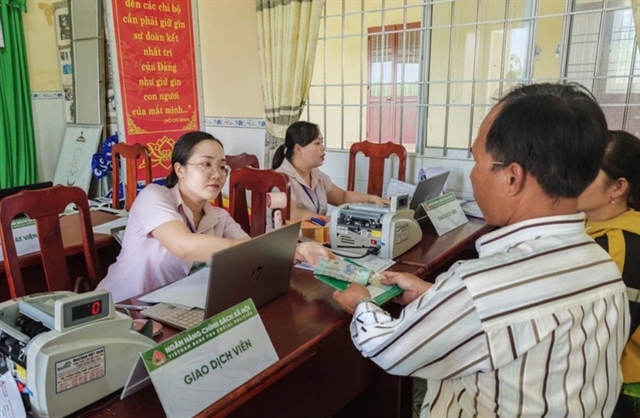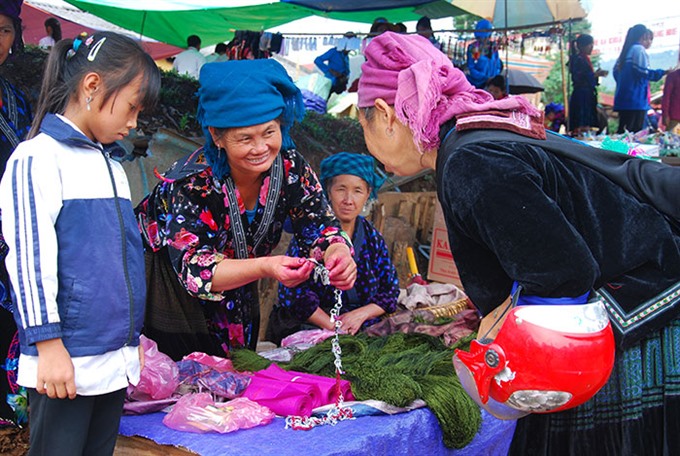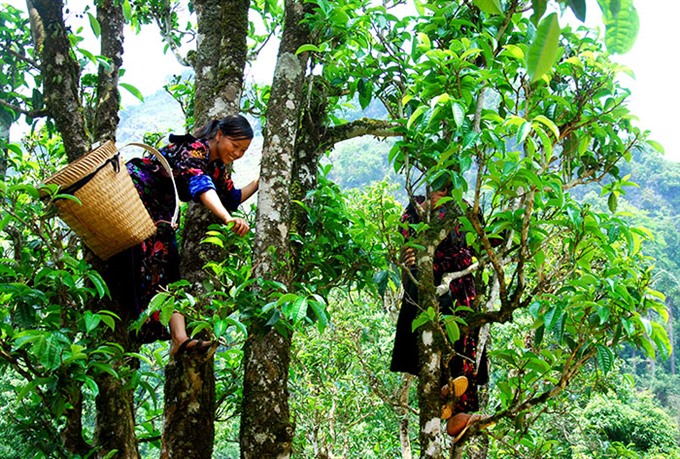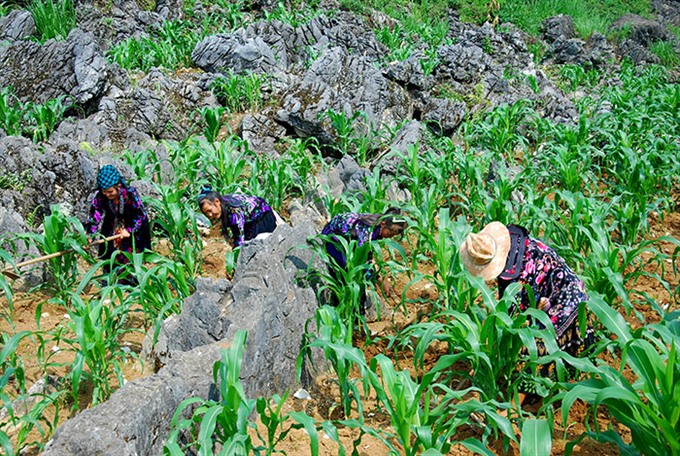 Life & Style
Life & Style

" />It seems that nowhere else in the northern province of Điện Biên is quite like Tủa Chùa District. Most of the district, located 1,400m above sea level, is covered with rugged rocky mountains. Along with the district’s frequent yet unpredictable natural calamities like landslides and severe thunderstorms, the topography convinces people of the harshness of the land.
 |
| Local fare: The Tả Sìn Thàng market is a perfect place for backpackers to immerse themselves in the typical ethnic cultures of Tủa Chùa District. |
By Hà Linh
It seems that nowhere else in the northern province of Điện Biên is quite like Tủa Chùa District. Most of the district, located 1,400m above sea level, is covered with rugged rocky mountains. Along with the district’s frequent yet unpredictable natural calamities like landslides and severe thunderstorms, the topography convinces people of the harshness of the land.
Despite all of these extremities, Tủa Chùa still holds a strange attraction, thanks to its poetic scenery and hospitable locals.
“If anyone thinks they know Tủa Chùa like the back of their hand, when they try exploring the land in a different way, they will discover new things among the familiar,” says Dương Khánh Nam, a backpacker who has travelled to the district several times.
Nam said he and his friends, who are also backpackers, spent two days and one night to thoroughly explore the land. The group embarked on their trip at the centre of the district at 7am in order to arrive at Tả Sìn Thàng market, which opens every six days, on time.
 |
| Old-style: Mông women pick tea leaves on ancient tea trees in Tủa Chùa District. — VNS Photos Hà Linh |
Not only offering a rendezvous for ethnic locals of six northern districts to meet and exchange their agricultural products, the market is also a perfect place for the backpackers to immerse themselves in the typical ethnic culture of the area.
Tả Sìn Thàng Market still preserves many unique features such as the colourful traditional costumes of the ethnic locals and a variety of fresh local specialties like bamboo shoots, thin-top mushrooms, fish, pork and chicken. Visitors to the market should try the steaming hot colourful sticky rice or thắng cố (horse meat and offal), which cannot be enjoyed without Mông Pê, an aromatic wine distilled from maize fermented with a special forest leaves.
“After getting tired on the way here, don’t hurry to move on. Why not become uninvited guests of any Xạ Phang family in Tả Sìn Thàng District? You will be treated to unique-tasting salted pork. The specialty, together with the hospitality of the host, will certainly give you an interesting experience,” Nam said.
 |
| Adaptable: Mông women plant maize and soybeans on the rough rocky mountains. |
After Tả Sìn Thàng market, his group continued their journey to the land of ancient tea trees. Along the way, they had chance to contemplate a stunning work of nature: Tả Phìn rock plateau, which seemed to stretch to the sky’s end. They also passed Vàng Lồng Citadel, an architectural building that features the ancient culture of the Mông people in the northwest.
By the afternoon, they arrived at Sín Chải, home to nearly 4,000 ancient Shan Tuyết tea trees hundreds of years old. The harvest lasts from March till October, and the job is done mostly by Mông women. In order to harvest the fresh buds, they have to climb dozens of metres.
Tủa Chùa’s Shan Tuyết tea has a unique flavour and creates glittering yellow brew. It tastes a little bitter at first, but then the acrid sweetness lingers on the tip of the tongue, leaving a lasting impression, another must-try of this rough rocky land.
And when the night fell, Nam’s team guarded against the cold of the highlands by spending the night sitting by the fire with a Mông family, savouring local specialties like black chicken, sipping the pungent Mông Pê wine or Shan Tuyết tea and listening to mysterious stories of the forests. “The night passed by faster than we thought,” Nam recalled.
 |
| Peaks and valleys: The poetic peaceful scenery of Tủa Chùa by Đà River. |
The unpolished gem
A trip to Tủa Chùa District is like a journey back in time. There are barely any hostels, no recreation areas and in some areas, there is even no phone signal.
However, tourists don’t need to prepare much for their trip, except for good health and high spirits.
“We didn’t have to spend much money for our trip, but we have received much more than we expected: the affection of the locals and a better understanding of the land we thought we were familiar with,” Nam said.
“Although they have not been trained to do tourism professionally, the locals here have always been willing to welcome any guests who get lost and treat them with their most sincere hospitality,” he added.
According to Nguyễn Xuân Bắc, the head of the district’s Cultural Department, the natural beauty, culture and the hospitality of the locals has high potential as a tourist draw, but it hasn’t been properly exploited.
He said most tourists to the area are young backpackers, as there has not been any tour on offer, and the locality has not earned any revenue from tourism.
There are many reasons for this, he added, including the inconvenient access, poor infrastructure and the lack of human resources. The biggest problem is the lack of investment capital.
“Tủa Chùa’s tourism is considered a ‘rough gem’ of nature, and in order to polish it, it takes a huge amount of capital, but the state budget is limited,” Bắc said.
Therefore, in recent years, the district has opened doors and offered favourable conditions, appealing to more tourism enterprises to invest, promote and exploit the local tourism potential.
Tủa Chùa District has also collaborated with nearby provinces to study and construct waterway tourism routes on Đà River.
“It is hoped that the hidden beauty of Tủa Chùa will be introduced to more tourists nationwide, through which local tourism will reach new heights in the short term,” he added. — VNS
The recent floods and landslides that hit Điện Biên Province last June has caused serious damage to the province, destroying 47 houses among which six are located in Tủa Chùa District. Many traffic routes linking villages in the district were blocked due to severe landslide. It is therefore advisable for tourists to avoid visiting Tủa Chùa District in the rainy seasons during June, July and August. It is best to visit the destination in March, the season of ban flower, in late August and September, the season of golden ripping rice on the terraced fields and in December when the highway 6 to Điện Biên Province is covered with blossoming marigold tree. — VNS |



